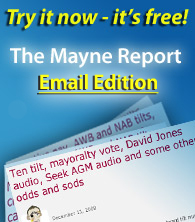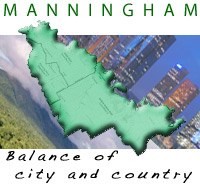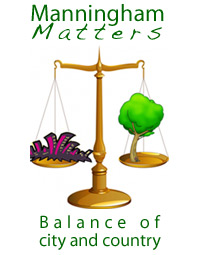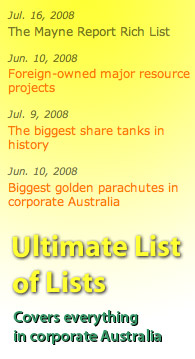Failures in corporate voting
By Dean Paatsch
March 31, 2009
This is an extended version of a recent opinion piece by Dean Paatsch from Risk Metrics in The AFR about Australia's hopeless corporate voting system.
When Aristocrat's major shareholder Paul Ainsworth voted by proxy against proposed takeover provisions at this year's AGM, he didn't anticipate that millions of his votes could simply disappear. The Ainsworth fortune was built on gaming, but the discovery that casting a proxy was itself a game of chance shocked him. A subsequent investigation revealed that one of three large parcels of votes was not recorded; his shareholder rights lost without explanation or apology.
Institutional shareholders are beyond shock: for them the failure to process proxy forms has become a routine event. It's an inevitable consequence of the outmoded system used by Australian companies to count proxy votes. AMP Capital Investors released a study in 2006 estimating that up to 4% of its proxy votes cast that year had gone “missing”. That figure is conservative, for like Ainsworth, AMP was only alerted to the possibility of ‘empty voting' because the size of its holding was greater than the reported ‘against' votes declared by the companies they owned.
Human error, it seems, is now an accepted design feature of the manual vote counting systems used by Australia's share registries. However unlike other corporate actions such as the payment of dividends, the absence of any audit trail in the proxy voting process allows boards and their agents to pretend that blunders do not exist. For companies and share registries caught red-handed with failure, it is business as usual; no admission of mistake can be tolerated. Denial, unsurprisingly, is the shared language of their complicity.
AMP's alarm at the parlous infrastructure used to tabulate votes was shared by a diverse range of participants that gathered together for the Investment & Financial Services Association's (IFSA) Voting Roundtable in 2007. In its submission to the Parliamentary Joint Committee (PJC) on Shareholder Engagement, the IFSA group identified the manual processing of paper based instructions, the lack of audit trail and time pressure (caused by a coincidence of dates for proxy form lodgement and the determination of vote entitlement) as key weaknesses in the current system.
The PJC's final report endorsed the IFSA group's aspiration that a fully transparent electronic voting system be developed for Australian companies, but stopped short of compelling its creation. It made a number of recommendations to clarify that companies could accept electronic instructions. It also suggested that the reform process would be helped if the Parliament created a window of time between the ‘record' date on which the vote entitlements are determined and the final deadline for the lodgement of proxies. This gap would allow time for processing and confirmation to shareholders.
The suggested reforms, however well-intentioned and important, are tinkering at the margin. Even if all twenty-one of the PJC's recommendations were adopted tomorrow, paper proxy forms would continue to be processed manually by registry staff free from the inconvenience of independent scrutiny or an external audit trail. Australia is to be contrasted with the US where, thanks to an auditable electronic system, Yahoo was recently shown to have understated a proxy result as a consequence of a processing error. The shop window of respectability presented at Australian listed company meetings belies the presence of a back office brothel, where even the most basic shareholder right, to vote, is habitually violated.
The lack of integrity in the vote counting system is not a trivial issue. Australian investors are frequently faced with shareholder votes to approve takeovers by ‘Schemes of Arrangement'. If 75% of shareholders who turn out to vote approve the terms of a scheme, then the shares of any dissenting (and non-voting) investor can be compulsorily acquired at a price that they do not consider is fair value.
Close votes on resolutions that involve significant transfers of value are not uncommon. Consider the case of the $800 million privatisation of Rebel Sport, where the vote was carried by 0.04%. Or at LinQ Resources where the selective buyback of $110 million in stock at a 40% premium from two activist hedge funds squeaked over the line by $2 million worth of votes. In proxy fights, a transparent process is crucial to investor confidence in the result. A modest change would safeguard shareholder rights by allowing those with more than 5% of a company to appoint an independent body to run meetings or scrutineer a vote count.
The more comprehensive solution however lies in developing a fully electronic process. Most institutional investors already utilise auditable electronic messaging (called SWIFT) for communication between various links in the voting chain. However the system breaks down at the last and most important step: when the share registries require an authenticated fax or paper form to be lodged. Unfortunately the prospect of litigation has not spurred these agents to utilise SWIFT lodgement or to develop a viable alternative; to date they cite cost as the major barrier to implementing a functional system. Instead, one presumes, shareholders should be satisfied with paying monopolistic fees to run a lottery in place of a robust method for counting shareholder votes.
It's evident that the impasse will only be broken if companies force the Australian share registry oligopoly to develop an open system for the electronic lodgement of proxies. Self preservation should be a powerful motivation - a proxy scandal that could end a director's career is but an administrative slip up away.
It's just luck that Paul Ainsworth's proxy was not the crucial vote needed to defeat an unwanted takeover of Aristocrat by Scheme of Arrangement. One hopes that by the time proxies are submitted to next year's batch of AGMs, meaningful reform will have occurred. Until then millions of shareholders in Australian companies are unwittingly gambling with their ownership rights.
* Dean Paatsch is a Director of RiskMetrics Australia and one of the convenors of the IFSA Voting Roundtable
Copyright © 2024 The Mayne Report. All rights reserved






















